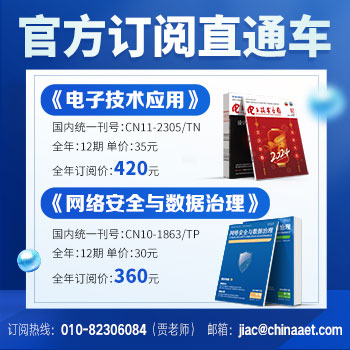中文引用格式: 陳妮,羅曉春. 雙模態(tài)穩(wěn)態(tài)誘發(fā)腦電刺激系統(tǒng)設(shè)計(jì)[J]. 電子技術(shù)應(yīng)用,2024,50(8):48-53.
英文引用格式: Chen Ni,Luo Xiaochun. Design of bimodal steady-state evoked EEG stimulus system[J]. Application of Electronic Technique,2024,50(8):48-53.
引言
感知是認(rèn)知的早期過程,是發(fā)展為認(rèn)知的基礎(chǔ)。大腦在重復(fù)性刺激下的腦電響應(yīng)稱為穩(wěn)態(tài)誘發(fā)電位( Steady-State Evoked Potentials, SSEPs)。SSEPs具有頻率跟隨特性,這一特性使其作為刺激物響應(yīng)標(biāo)簽在大腦的感知認(rèn)知研究中得到廣泛應(yīng)用[1-3]。
視覺和聽覺刺激都能產(chǎn)生SSEPs[4]。恒定頻率的閃爍視覺刺激引起穩(wěn)態(tài)視覺誘發(fā)電位(Steady-StateVisual Evoked Potentials, SSVEP),重復(fù)性聽覺刺激誘發(fā)產(chǎn)生聽覺穩(wěn)態(tài)響應(yīng)(Auditory Steady-State Responses, ASSR)。已經(jīng)發(fā)現(xiàn)在不同刺激頻率下SSEPs的幅度具有諧振變化特性,例如:刺激頻率為1~100 Hz的閃爍光能誘發(fā)SSVEP[5],SSVEP幅度響應(yīng)的諧振特性出現(xiàn)在5~12 Hz、13~25 Hz、25~50 Hz三個(gè)頻段,ASSR的諧振頻率在40 Hz左右[6-7]。顏色、幅度、刺激器類型等視覺刺激參數(shù)都會(huì)影響SSVEP的幅度值[8-9]。目前,關(guān)于SSEPs響應(yīng)變化的研究大多集中在單一刺激模式[4,9],僅有少數(shù)關(guān)于視聽刺激下SSVEP時(shí)空分布特性的初步研究[10-11]。然而,大腦對(duì)外界刺激的認(rèn)知往往需要綜合多種感覺刺激輸入,需要研究不同感官之間處理信息的相互作用。這就要在多種感覺刺激下研究一種刺激對(duì)另一種刺激誘發(fā)的穩(wěn)態(tài)電位的影響(增強(qiáng)、減少或不變)。一種能輸出多種模態(tài)感覺刺激的實(shí)驗(yàn)裝置對(duì)于這類研究至關(guān)重要。
現(xiàn)有的刺激系統(tǒng)大多為商業(yè)系統(tǒng),系統(tǒng)的刺激器類型及其參數(shù)不便于調(diào)整。為拓展實(shí)驗(yàn)?zāi)J剑瓿霈F(xiàn)了利用微控制器改進(jìn)刺激器的研究,包括:用于植入式神經(jīng)調(diào)控的紅外光刺激器、用于腦機(jī)接口系統(tǒng)的LED刺激器[12-14]等。為此,本文利用STM32F103RC(簡(jiǎn)稱:STM32)微控制器和AD9959芯片,設(shè)計(jì)一個(gè)能輸出視覺和聽覺刺激的雙模態(tài)感覺刺激系統(tǒng)。利用該系統(tǒng)開展SSEPs的實(shí)驗(yàn)測(cè)試,測(cè)試結(jié)果表明所設(shè)計(jì)的系統(tǒng)能產(chǎn)生穩(wěn)態(tài)誘發(fā)響應(yīng)。
本文詳細(xì)內(nèi)容請(qǐng)下載:
http://forexkbc.com/resource/share/2000006121
作者信息:
陳妮1,羅曉春2
(1.廣西醫(yī)科大學(xué) 生命科學(xué)研究院,廣西 南寧530021;
2.廣西貴港市人民醫(yī)院 設(shè)備科,廣西 貴港 537100)


